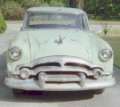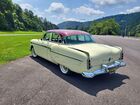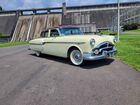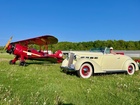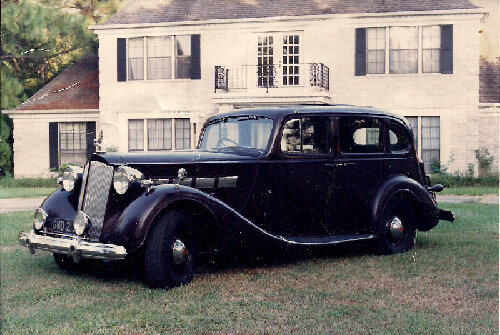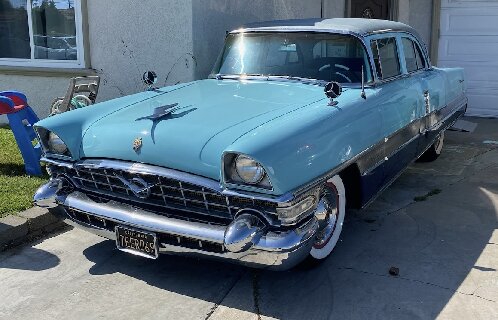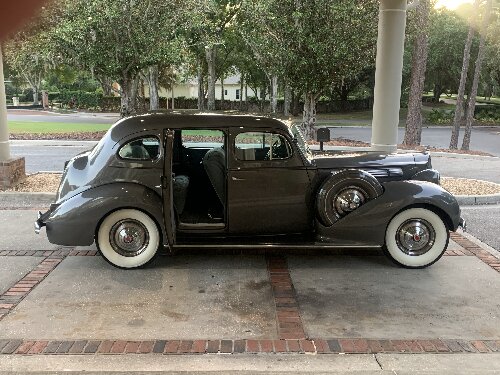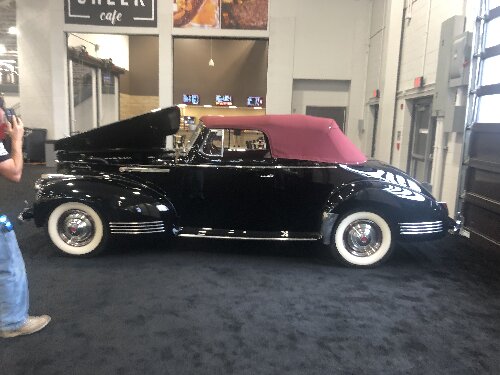|
Re: Vitron Rubber Tipped carburetor Needle
|
||||
|---|---|---|---|---|
|
Forum Ambassador

|
The Grose Jet is of solid metal construction, but in addition to sealing perfomance, I suspect they promoted this design for vehicles where the OE needle and seat sets were NLA and reproduction weren't forthcoming.
Posted on: 2009/9/22 11:23
|
|||
|
||||
|
Re: Vitron Rubber Tipped carburetor Needle
|
||||
|---|---|---|---|---|
|
Home away from home

|
Personaly, i see absolutely nothing wrong with conventional SOLID needle and seat.
In addition to the Grosse Jet there was a a kind of donut shaped disk type (no needle) and seat that was offered in some kits during the 70's. I mite still have one in my junk pile somewheere. But i don't recall it as having any magical effects greater than convention solid needle and seat.
Posted on: 2009/9/22 11:11
|
|||
|
VAPOR LOCK demystified: See paragraph SEVEN of PMCC documentaion as listed in post #11 of the following thread:f
https://packardinfo.com/xoops/html/modules/newbb/viewtopic.php?topic_id=7245 |
||||
|
||||
|
Re: Questions re Universal power brake booster.
|
||||
|---|---|---|---|---|
|
Forum Ambassador

|
Keith -
The seals that came in new, repro overhaul kits that I obtained from Kanter and others required no reworking of the counterbore. The rubber cup seal looks to be newly manufactured. The leather seal could be an off-the-shelf item, but I never looked into that. As such, I personally see no reason to machine the counterbore except for damage, but - never mind scratches and scores - I haven't even found corrosion in the counterbore of any of the units I renewed that would require machining. Cores from field cars might be a whole 'nuther story, though. If a rebuilder is modifying the counterbore to accept some sort of other seal, it seems to me that they made too much work for themselves - unless they have darned good reason for a seal of alternate design. If so, I'd like to know the whys and wherefores. Personally, I've had no problem with the repro rubber seals, but would like to hear if others have.
Posted on: 2009/9/22 11:08
|
|||
|
||||
|
Re: Vitron Rubber Tipped carburetor Needle
|
||||
|---|---|---|---|---|
|
Home away from home
|
Be careful about Viton and PTFE(Teflon) being related - that's true but they are not interchangable. Viton is an elastomer (rubbery) and will act as a seal. Teflon is not. (If you tighten a Teflon seal it just oozes to relieve the stress).
Posted on: 2009/9/22 11:05
|
|||
|
||||
|
Re: Questions re Universal power brake booster.
|
||||
|---|---|---|---|---|
|
Home away from home

|
T'Packman writes "It seems that a proper rebuild with all the required machining to get it all back to spec is paramount, and expensive."
SURE! And here's another one of my questions that no one will like but i'm gonna ask it anyway: WHAT the fuck are OEM SPECS ??? WHERE are the OEM specs???? WHO has them????? e.g. Is there some genius out there that has OEM specs for the rubber compounding in the compensator port seal???? The spring?????? And apparently all of the "Qualified, Reputable", christened, confirmed, washed in the blood and dyed in the wool "Professionals" don't have the specs either or there would not be so many reports of returns due to failure. Of course, everyone is installing their BTV's the wrong way now arn't they????? Couldn't possibly be the rebuild!!! Oh dear, not at all.
Posted on: 2009/9/22 11:02
|
|||
|
VAPOR LOCK demystified: See paragraph SEVEN of PMCC documentaion as listed in post #11 of the following thread:f
https://packardinfo.com/xoops/html/modules/newbb/viewtopic.php?topic_id=7245 |
||||
|
||||
|
Re: Bright work 1941 120
|
||||
|---|---|---|---|---|
|
Home away from home
|
I think the emblem is common 110-120-160 (the latch it fits into changes). 180 is cloisonn?. Whether it's painted differently between models I don't know - I'll try to get a shot.
Posted on: 2009/9/22 11:01
|
|||
|
||||
|
Re: Questions re Universal power brake booster.
|
||||
|---|---|---|---|---|
|
Home away from home

|
BH. My thots exaclty. The 'sleeveing' that is talked about over at the Tri-5 sites i finally realized they were talking about hte conterbore for the SEALS. But why??? I'm guessing that sleeving is for some other reasons not related to 'cleaning up' the counter bore for the seals. Most likely seals are retro-fitted to the unit that are a different OD dimension maybe.
Also note that at the tri-5 sites 2 or 3 have indicated problems with units from "Qualified and Reputable" BTV rebuilders that required 3 send backs to correct. I believe we can get to the bottom of this BTV problem. Maybe no solution to the BTV itself but at least understand the problems that seem to go beyond and thru secular rebuilding attempts.
Posted on: 2009/9/22 10:51
|
|||
|
VAPOR LOCK demystified: See paragraph SEVEN of PMCC documentaion as listed in post #11 of the following thread:f
https://packardinfo.com/xoops/html/modules/newbb/viewtopic.php?topic_id=7245 |
||||
|
||||
|
Re: Vitron Rubber Tipped carburetor Needle
|
||||
|---|---|---|---|---|
|
Forum Ambassador

|
Decades ago, I saw display ads in Cars & Parts magazine for a Grose Jet replacement needle and seat that used a ball in a conical seat. Ball and cone is a very sound principle for sealing; I recall DeVilbiss touting such a design feature for the air cap and fluid tip in their spray guns.
Perhaps the Grose Jet valve was only made for older carbs (prewar cars, brass era?), but it sounds like there's an opportunity, now, for later models.
Posted on: 2009/9/22 10:09
|
|||
|
||||
|
Re: Bolt in Replacement for TreadleVac
|
||||
|---|---|---|---|---|
|
Home away from home

|
Be sure that the vendor is aware that the FORWARD end of the MC fits EXTRMELY close to the frame!!
i.e. the OVERALL lenght of the entire unit must not exceed the length of stock BTV!!! OTherwise, frame interference will obtain. Actualy, i would prefer at least 1/8" shorter or maybe even 1/4" shorter to allow for body sag and road compliance. The stock BTV sat extremely close to frame at the very forward end of the MC..
Posted on: 2009/9/22 10:01
|
|||
|
VAPOR LOCK demystified: See paragraph SEVEN of PMCC documentaion as listed in post #11 of the following thread:f
https://packardinfo.com/xoops/html/modules/newbb/viewtopic.php?topic_id=7245 |
||||
|
||||

